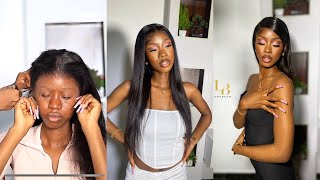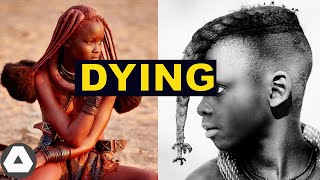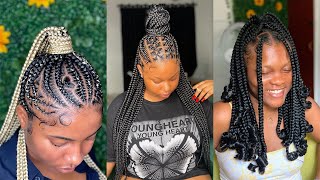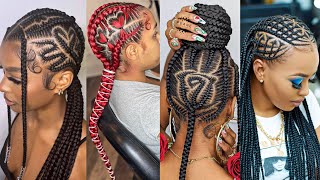What Does Science Say About Afro Hair And Hair Growth
 From time to time we come across a brilliant video that absolutely must be shared and in this post we wanted to highlight one that we think everyone of African decent, with afro textured hair or kinky* curly, should watch.
From time to time we come across a brilliant video that absolutely must be shared and in this post we wanted to highlight one that we think everyone of African decent, with afro textured hair or kinky* curly, should watch.
Naturally High dedicates her channel to helping women with 4C hair to retain more length through education and giving awesome tutorials showing just how she retains length to her own natural hair.
In this video, she breaks down why afro hair acts the way it does which is based on our biological make up as well as some of the scientific and social identifiers that are still being applied to people of African decent even today.
Here are 5 out of 9 of the main points she discusses and the notes she made on the video itself:
1. The way our hair looks is determined solely by the shape of the hair follicle despite the biochemical differences among races.
‘Although there are no biochemical differences among black, Caucasian, and Asian hair types, there are differences in the hair morphology (8). Black hair appears elliptical or flattened in cross-section, whereas Caucasian hair is oval, and Asian hair round. The follicle of black hair is curved, in contrast to a straight follicle in Caucasians and Asians.’ –
Source: Callender, V. D., McMichael, A. J. and Cohen, G. F. (2004), Medical and surgical therapies for alopecias in black women. Dermatologic Therapy, 17: 164–176. doi:10.1111/j.1396-0296.2004.04017.x
2. What is normal black African hair? – Our hair frequently tangles and has knots and we often suffer a ton of cuticle loss however the inner areas of our hair tend to remain intact.
‘African hair is curly and frequently exhibits knots . However, increased evidence of wearing with some loss of the cuticular pattern was observed towards the tip of the hair in all 3 racial groups. The most extreme wearing, with complete loss of cuticular structure, was seen toward the tip of the hairs of the Caucasian subject with the longest hair.
However, the hair shafts of the African volunteers did exhibit structural damage with evidence of longitudinal fissures, resulting in splitting of the hair shafts. The splitting was also associated with knot formation. Longitudinal fissures were not observed in the Caucasian or Asian hairs. It was also observed that many of the black African hairs (approximately 40%) were fractured with no attached root.
‘The African hair shafts were enclosed by a well-preserved cuticle similar to that observed for the other racial groups.’
‘The most significant feature was that the majority of the tips of the African hair had fractured ends …Similarly, the basal end also exhibited evidence of breakage in contrast to the Caucasian and Asian samples in which the majority of hairs had attached roots.’
Source: Khumalo NP, Doe PT,Dawber PR, Ferguson DJP.study. J Am Acad Dermatol 2000: 43:814–820.

3. We should keep our hair stretched and protected to increase the length of the hair
‘From these observations, it could be proposed that any procedure that reduces knotting of hair and/or the need for combing would result in an increase in the length of the hair by reducing the incidence of breaks in the hair shafts.’
Konishi, S. (2008). tied in rolled knots and powdered with ochre’: Aboriginal hair and eighteenth-century cross-cultural encounters. Borderlands.
4. Taxonomer Carolus Linnaeus is responsible for how race and people are identified. This means that the concept of ‘race’ is completely manmade. Africans are classified as Homo afer or ‘black frizzled’
Through the influential work of the great taxonomer, Carolus Linnaeus, Homo europaeus ‘yellow, brown, flowing’, Homo asiaticus ‘abundant black’, and Homo afer ‘black, frizzled’ (cited in Rosenthal, 2004: 2).
This eighteenth-century definition and conceptualisation of African hair as ‘woolly’ intersected with slavery discourses which dehumanised the African body in order to justify its abject treatment.
The Oxford English Dictionary indicates that this derogatory term signifying ‘the short, tightly-curled hair of Negroid peoples’ was first used in a runaway slave advertisement in 1697.
This type of hair was also ascribed sexual connotations, for according to Allan Peterkin, ‘frizzy’ hair was seen as ‘demonic, licentious, and pubic.’
‘Negro’ possessed ‘wool instead of hair’, and that this difference, in concert with others concerning skin and facial features, suggested that they ‘appear to constitute a new species of man.’
Source (in Diderot and d’Alembert, 1765, v. 11: 76). uaresma, M. V., Martinez Velasco, M. A., & Tosti, A. (2015). Hair Breakage in Patients of African Descent: Role of Dermoscopy. Skin Appendage Disorders, 1(2), 99–104. http://doi.org/10.1159/000436981
5. Our hair is naturally dry
‘In addition to these properties, the water content in African descent hair is slightly lower than in Caucasian hair, and the sebaceous glands often secrete an inadequate amount of sebum, which has an uneven distribution along the shaft due to its spiral shape, leaving the hair with a dry appearance. M [17,20]’
Additional discussion points include the fact that the more the hair clumps the shiner the hair if your hair does not clump it will appear less shiny. It is all dependent on how light is reflected from your hair and not based on how healthy your hair is.
Please watch this awesome video below:




